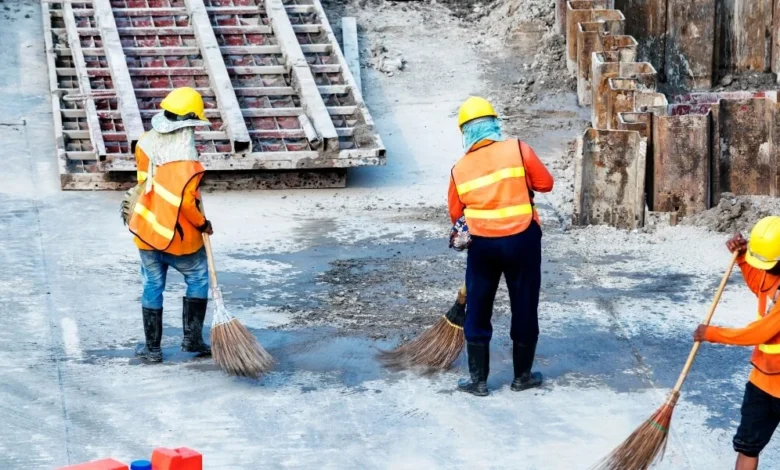Navigating Safety in the Workplace: Top 10 Hazards and Prevention Strategies

In today’s dynamic work environments, prioritising safety is not just a regulatory requirement but a crucial aspect of fostering a healthy and productive workplace. From the bustling floors of manufacturing plants to the quiet cubicles of corporate offices, hazards lurk in various forms. Recognising these risks and implementing effective prevention strategies can significantly reduce accidents and ensure a safer workplace for everyone.
Let’s explore the top 10 common workplace hazards and offer practical tips for their prevention, underscoring the importance of safety signs for occupational environments in mitigating risks.
Slips, Trips, and Falls
- Risks: Wet floors, uneven surfaces, and cluttered walkways can lead to serious injuries.
- Prevention: Regularly inspect floors for spills, wear appropriate footwear, and ensure walkways are clear and well-lit. Signage indicating wet floors or uneven surfaces can alert employees and prevent accidents.
Ergonomic Hazards
- Risks: Poor posture, repetitive motions, and improper workstation setups can lead to musculoskeletal disorders.
- Prevention: Ergonomically design workspaces, encourage regular breaks, and provide training on proper posture. Ergonomic risk signs can remind workers to adjust their posture or take a break.
Electrical Hazards
- Risks: Exposed wires, overloaded circuits, and faulty equipment can cause shocks, burns, or fires.
- Prevention: Regular electrical inspections, proper use of equipment, and adherence to safety protocols are essential. Clearly labelled signs around electrical hazards can alert employees to potential risks.
Chemical Hazards
- Risks: Exposure to harmful chemicals can cause burns, poisoning, or long-term health issues.
- Prevention: Use protective equipment, ensure proper ventilation, and follow handling and storage guidelines. Chemical hazard signs can inform employees about the dangers and necessary precautions.
Fire Hazards
- Risks: Flammable materials, faulty electrical equipment, and poor housekeeping can increase the risk of fire.
- Prevention: Maintain clean work areas, adhere to fire safety practices, and have accessible fire extinguishers. Fire hazard signs can guide employees to safety equipment and exits.
Mechanical Hazards
- Risks: Machinery with moving parts can cause injuries such as cuts, amputations, or entanglements.
- Prevention: Use guards and safety devices, train employees on machinery operation, and enforce protective gear usage. Signs indicating mechanical hazards remind workers to stay cautious.
Noise Pollution
- Risks: Prolonged exposure to high levels of noise can lead to hearing loss or stress.
- Prevention: Use hearing protection, control noise sources, and limit exposure time – posting noise hazard signs can alert workers to wear protective equipment.
Biological Hazards
- Risks: Exposure to bacteria, viruses, and other infectious materials can cause health problems.
- Prevention: Implement hygiene practices, provide vaccinations, and use personal protective equipment. Signs indicating biological hazards can promote awareness and preventive measures.
Stress and Mental Health
- Risks: High stress levels, workplace bullying, and long hours can impact mental health.
- Prevention: Foster a supportive environment, encourage work-life balance, and provide access to mental health resources. Signs promoting mental health awareness can help create a supportive culture.
Working at Heights
- Risks: Falls from ladders, roofs, or scaffolding can result in severe injuries.
- Prevention: Use fall protection equipment, ensure stable working platforms, and train employees on safe practices. Signs warning of fall hazards can remind workers to use safety equipment.
Goodluck and stay safe!
Preventing workplace hazards requires a proactive approach, combining risk assessment, employee training, and the strategic use of safety signs to highlight and mitigate dangers. By understanding and addressing these top 10 hazards, businesses can create safer work environments that protect their most valuable asset – their employees. Remember, safety is a shared responsibility, and every precaution taken is a step towards a safer, more productive workplace.




